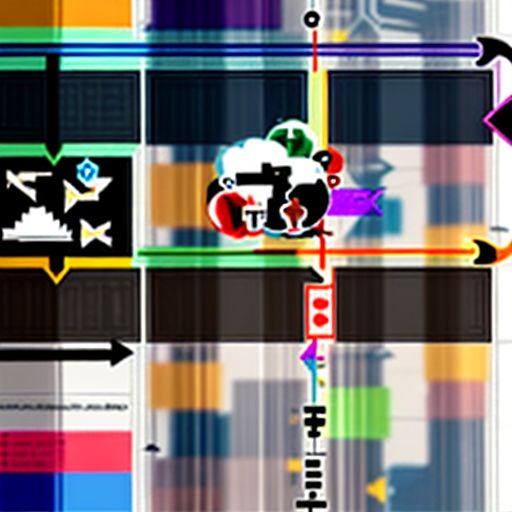Imagine this: you’re leading a project to launch a new product. You have a tight deadline, a limited budget, and a team eager to succeed. How can you ensure your project stays on track and meets its objectives?
This is where understanding the Critical Path Definition In Project Management becomes crucial. Just like a GPS guides you through the fastest route, the critical path highlights the most time-sensitive tasks that directly impact your project’s completion date.
What is the Critical Path in Project Management?
In project management, the critical path is the longest sequence of tasks that determine the earliest possible completion date of a project. It’s called “critical” because any delay in these tasks will directly delay the entire project’s finish date.
management.snuk.info/wp-content/uploads/2024/07/critical-path-illustration-669dcb.jpg" alt="Critical Path Illustration" width="512" height="512">Critical Path Illustration
Why is the Critical Path Important?
Understanding and managing the critical path is paramount for project success. Here’s why:
- Time Management: It helps you prioritize tasks, allocate resources efficiently, and prevent unnecessary delays.
- Decision Making: By identifying critical tasks, you can focus your efforts and resources on the most impactful activities.
- Risk Mitigation: You can proactively identify potential bottlenecks or risks associated with critical tasks and develop contingency plans.
- Communication: A clear critical path facilitates effective communication with stakeholders, keeping everyone informed about project progress and potential roadblocks.
How to Determine the Critical Path
- Define Project Activities: Break down your project into smaller, manageable tasks.
- Establish Dependencies: Identify the relationships between tasks. Which tasks rely on the completion of others?
- Estimate Task Durations: Determine the estimated time required to complete each task.
- Construct the Network Diagram: Use tools like Gantt charts or PERT charts to visually represent tasks, dependencies, and durations.
- Calculate the Critical Path: The longest path through the network diagram, from start to finish, represents your critical path.
Frequently Asked Questions About Critical Path
What is the difference between critical path and critical chain?
While the critical path focuses on task dependencies, the critical chain considers resource constraints as well. It acknowledges that limited resources can further impact task scheduling and project completion.
What is critical path analysis and why is it important?
Critical path analysis involves identifying, analyzing, and managing the tasks on the critical path. It enables project managers to make informed decisions, optimize resource allocation, and minimize delays.
What are some tools for critical path management?
Various project management tools, both online and offline, can assist in critical path analysis. Popular options include:
- Microsoft Project: A comprehensive software for managing complex projects.
- Smartsheet: A collaborative work management platform with robust critical path features.
- Asana: A flexible project management tool suitable for various project sizes and industries.
Conclusion
Mastering the concept of the critical path is essential for successful project management. By understanding its significance, you can effectively plan, execute, and monitor your projects, ensuring on-time completion and achieving your desired outcomes.
